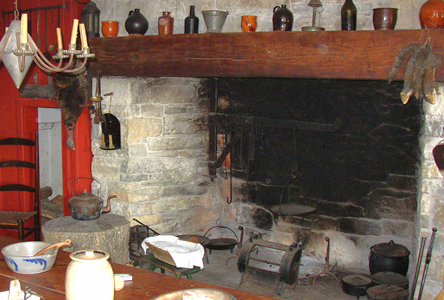
Piqua’s Military Sites a Must See
937-773-6753116 West High Street | Piqua, Ohio
Forest Hill Cemetery
Broadway, State Route 66 on the west edge of Piqua. The Civil War memorial pillar built by the Grand Army of the Republic (GAR) is an excellent example of monument architecture during the last half of the nineteenth century. The monument is surrounded by the simple domed topped grave markers supplied by the federal government for veteran burials. The interesting part of this area is that the 1880’s and 1890’s grave markers are a mixture of white and African-American veterans. While these Piqua soldiers were segregated in battle, they were honored together after death.
Johnston Farm and Indian Agency
(corner of State Route 66 and Hardin Road) The Johnston Farm was the site of Camp Piqua where two Ohio Volunteer Infantry Regiments (OVI) were formed, the 94th and the 110th. The farm house served as a temporary headquarters and hospital. According to local legends a teenage boy committed suicide in the house and continues to haunt the back stairs, distraught over his inability to become the “brave soldier” he had dreamed of becoming.
Dorsey Home
(north east corner of Wayne and North Streets) The two story brick, Greek Revival Style home at 603 North Wayne Street was build in 1850 for Dr. Godwin Volney Dorsey. The home is one of the best examples of the Upper Miami Valley variant of the Greek Revival style of architecture. Dorsey was an important figure in Ohio politics during the Civil War and his home was a center of political activity. Dorsey was one of the founders of the Union Party in Ohio (the merger of the Republic party and the pro-war Democratic Party) serving as party chairman. He was elected Treasurer of the State of Ohio in 1861 and re-elected in 1863. Dorsey promoted the granting of enlistment bonus’ for both white and African-American soldiers.
Jackson Cemetery, Rossville
(east of Country Road 25-A, off of Dixie Road near McFarland street) This African-American cemetery holds the graves of Civil War soldiers that fought in the nation’s first African-American regiment, the 54th Massachusetts. These local men were some of the first African-American soldiers to be part of a combat unit in American history. The 54th Massachusetts took heavy casualties and was one of the most distinguished regiments in the war. Other Ohio Civil War veterans are buried here served in several of the regiments of the United States Colored Troops (USCT).
Rowan Memorial
(directly east of the Shawnee Bridge) As a naval Commander, Stephen Clegg Rowan is often credited with firing the first union naval shot of the Civil War. Commanding the steam powered sloop the Pawnee, he directed three union ships to fire upon Confederate batteries at the mouth of Aquia Creek, Virginia on May 29, 1861. Rowan would retire from the navy in 1889 with the rank of Vice Admiral.
PIQUA MILITARY – WORLD WAR II
1. Veterans Memorial (southeast corner of Washington and Broadway)
While this monument honors all of Piqua’s twentieth century veterans, a large percentage of the bricks honoring individual soldiers are from World War II.
2. Hartzell Propeller Company Plant (northwest corner of High and Washington)
The Hartzell Company built wooden and composite propellers for the Army Air Corps during the war. In 1942, they created a new process for gluing wood to metal for the production of gliders.
3. Lear Avia Plant (southwest corner of College and Young Streets)
This firm built navigational instrumental for the Army Air Corps during the war. The head of the firm was William P. Lear, inventor, businessman and playboy. The firm was located in Piqua from 1941 through 1945.
4. Don Gentile Statue (northeast corner of North Main and High Streets)
Gentile (1920-1951) was a World War II flying ace in the European Theater. He was called “Captain Courageous” by President Franklin Roosevelt and “a one man Air Force” by General Dwight D. Eisenhower. The statute was dedicated in 1986.
